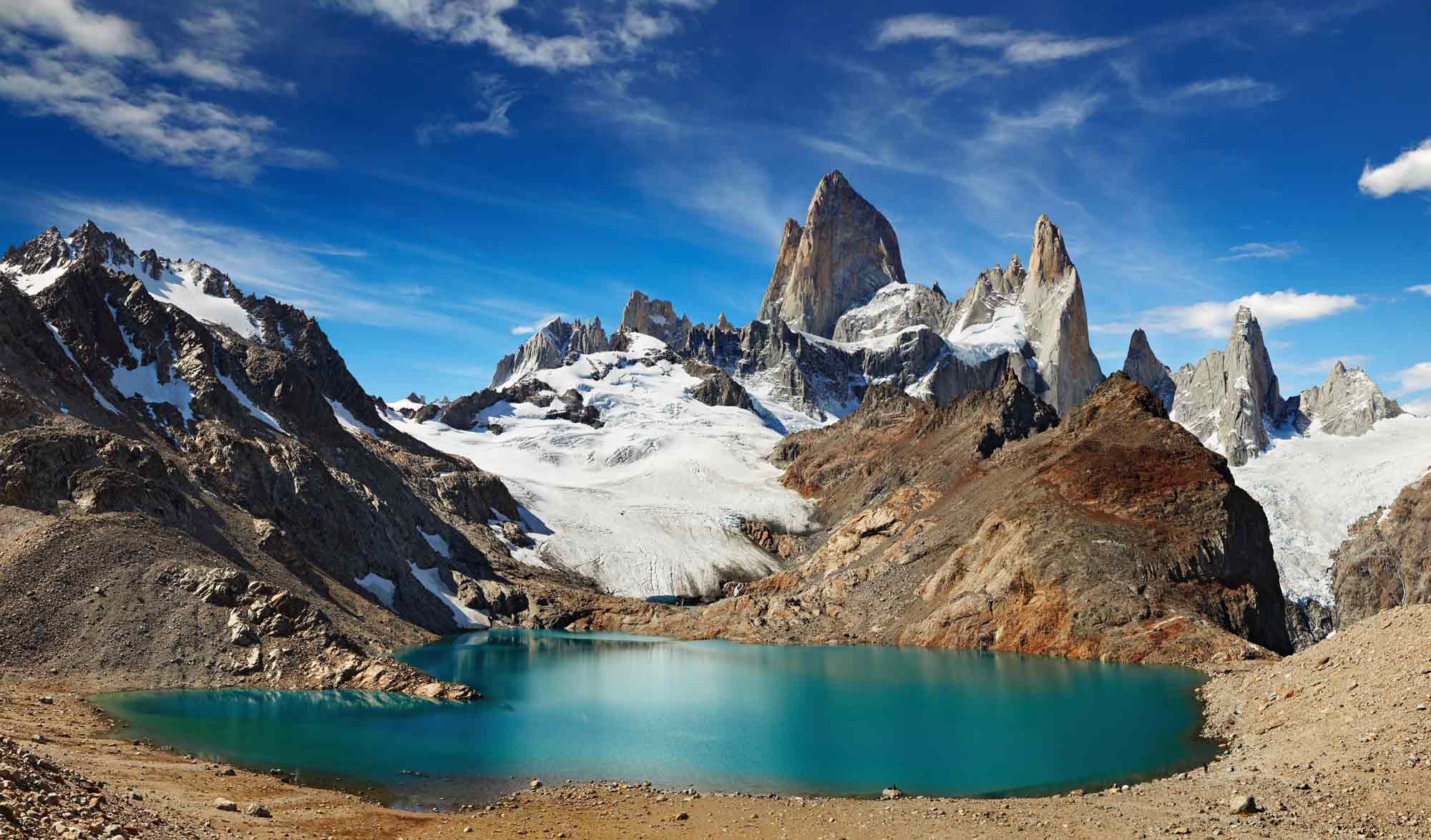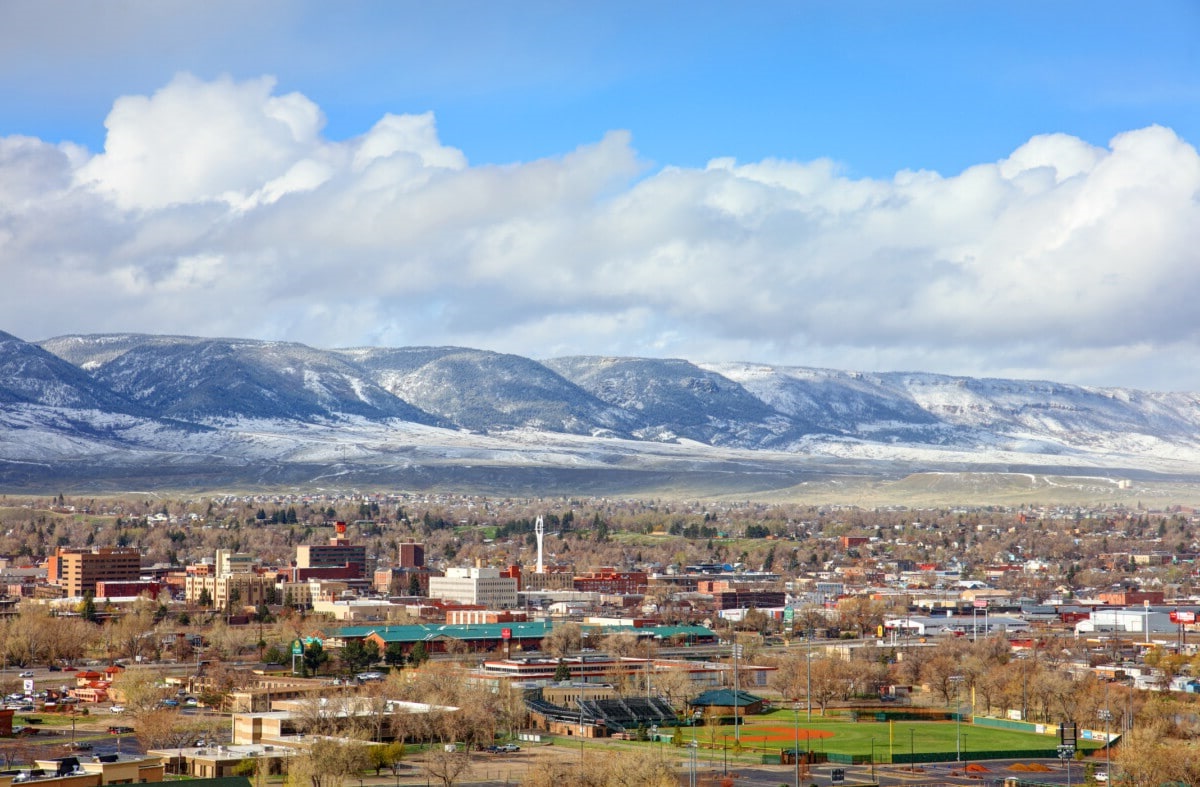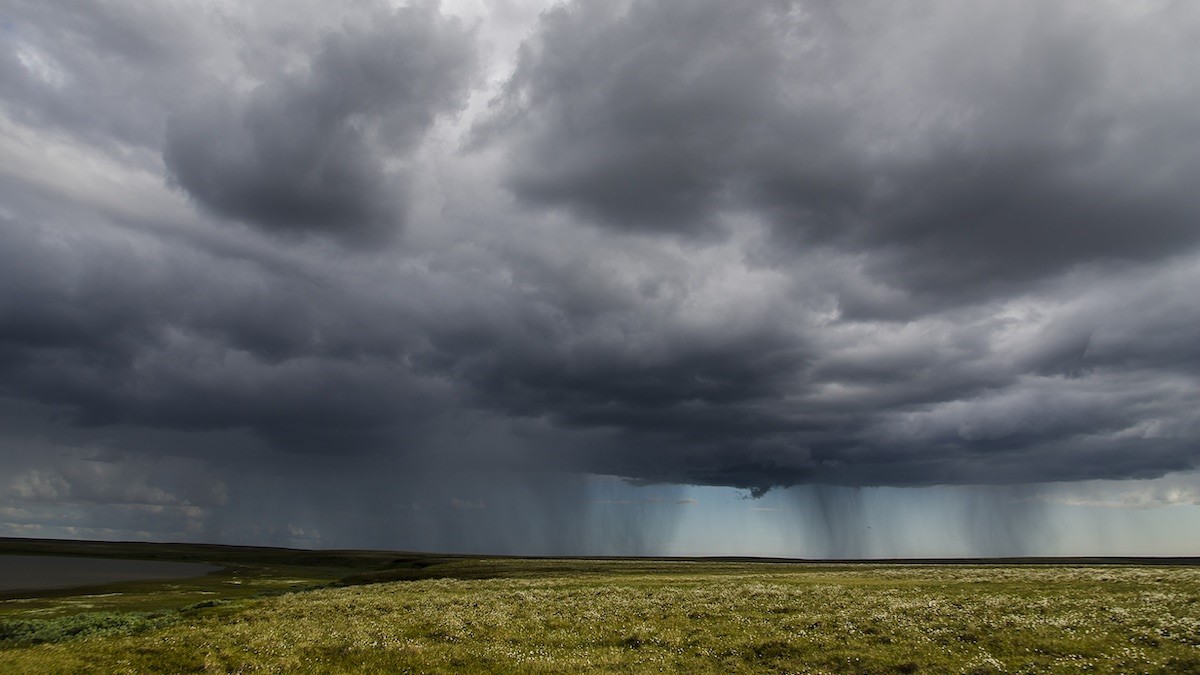Home>Weather and Climate>North Carolina Weather: A Year-Round Overview


Weather and Climate
North Carolina Weather: A Year-Round Overview
Published: March 1, 2024
Discover the diverse weather and climate of North Carolina throughout the year. From mild winters to hot summers, explore the state's varied meteorological conditions.
(Many of the links in this article redirect to a specific reviewed product. Your purchase of these products through affiliate links helps to generate commission for Temperatures.com, at no extra cost. Learn more)
Table of Contents
Introduction
North Carolina's diverse geography and proximity to both the Atlantic Ocean and the Appalachian Mountains contribute to a rich tapestry of weather patterns throughout the year. From the lush greenery of spring to the crisp snowfall of winter, the state experiences a wide range of climatic conditions that shape the lives of its residents and visitors. Understanding the nuances of North Carolina's weather can provide valuable insights for planning outdoor activities, preparing for seasonal changes, and staying safe during severe weather events.
Throughout this article, we will delve into the distinctive weather patterns that define each season in North Carolina, offering a comprehensive overview of the state's climate. From the blooming flora and mild temperatures of spring to the sweltering heat and occasional tropical storms of summer, each season brings its own unique atmospheric characteristics. As we explore the weather in North Carolina, we will also touch upon the state's susceptibility to severe weather events, such as hurricanes, tornadoes, and winter storms, highlighting the importance of preparedness and vigilance.
Join us on a journey through the ever-changing skies of North Carolina, where the weather paints a vivid backdrop for the state's natural beauty and cultural vibrancy. Whether you're a resident seeking to deepen your understanding of the local climate or a traveler planning a visit to the Tar Heel State, this exploration of North Carolina's weather promises to illuminate the fascinating interplay of meteorological forces that shape this captivating region.
Read more: Tennessee Weather: A Year-Round Overview
Spring Weather in North Carolina
As winter loosens its grip on North Carolina, the arrival of spring breathes new life into the state, ushering in a season of renewal and transformation. From March to May, North Carolina experiences a gradual transition from the cool, crisp air of winter to the gentle warmth of spring. The landscape awakens as trees begin to bud, flowers bloom in vibrant hues, and the sweet fragrance of blossoms fills the air.
During the early months of spring, temperatures gradually rise, with daytime highs ranging from the 60s to the 70s Fahrenheit, offering a pleasant respite from the chill of winter. However, it's important to note that North Carolina's weather in spring can be quite variable, with occasional cold snaps reminding residents that winter has not fully retreated. As the season progresses, the humidity levels begin to increase, contributing to the lush greenery that blankets the countryside.
Spring in North Carolina also brings with it the possibility of severe weather, including thunderstorms and the occasional tornado. The clash of warm, moist air from the Gulf of Mexico with lingering cold air masses can fuel the development of powerful thunderstorms, accompanied by lightning, heavy rainfall, and strong winds. While these storms are a natural part of the seasonal transition, it's essential for residents and visitors to stay informed about weather forecasts and heed any warnings issued by local authorities.
The natural beauty of North Carolina is on full display during spring, with the Blue Ridge Mountains and the Outer Banks offering breathtaking vistas that come alive with the vibrant colors of blooming wildflowers and budding trees. Outdoor enthusiasts flock to the state's numerous parks and trails to witness the spectacle of nature's rebirth, whether it's the azalea blooms at the Biltmore Estate in Asheville or the serene beauty of the Cape Hatteras National Seashore.
In summary, spring in North Carolina is a time of awakening, characterized by fluctuating temperatures, the emergence of colorful flora, and the potential for volatile weather. It's a season that invites both residents and visitors to embrace the spirit of renewal and venture outdoors to witness the captivating transformation that unfolds across the state's diverse landscapes.
Summer Weather in North Carolina
Summer in North Carolina arrives with a flourish, enveloping the state in a sultry embrace that heralds the peak of the warm season. From June to August, North Carolina experiences a dramatic shift in weather, marked by sweltering temperatures, high humidity, and the occasional influence of tropical systems from the nearby Atlantic Ocean. The long, sun-drenched days create an atmosphere of leisure and outdoor adventure, enticing residents and visitors alike to explore the state's diverse offerings under the summer sun.
The mercury steadily climbs during the summer months, with daytime highs often soaring into the 80s and 90s Fahrenheit, particularly in the central and eastern regions of the state. The coastal areas, including popular destinations such as Wilmington and the Outer Banks, experience the moderating influence of the Atlantic Ocean, with temperatures typically hovering in the upper 80s. However, the humidity levels can make the coastal regions feel even hotter, prompting locals and tourists to seek refuge in the refreshing sea breezes and cool waters.
Summer in North Carolina also brings the potential for tropical weather systems, including hurricanes and tropical storms. The state's proximity to the Atlantic Ocean renders it vulnerable to these powerful phenomena, which can unleash torrential rainfall, strong winds, and storm surges. While the majority of hurricanes veer away from the North Carolina coast, the possibility of their impact underscores the importance of preparedness and vigilance during the summer months.
Despite the heat and occasional tropical influences, summer in North Carolina offers a wealth of outdoor activities and cultural events. The state's numerous beaches beckon sun-seekers and water enthusiasts, providing an idyllic setting for swimming, surfing, and beachcombing. Inland, the lush forests and rolling hills provide a verdant backdrop for hiking, camping, and exploring the natural beauty of the Blue Ridge Mountains and the Great Smoky Mountains.
Culturally, summer in North Carolina is a time of festivals, concerts, and outdoor gatherings that celebrate the state's rich heritage and artistic traditions. From the lively street festivals in Asheville to the renowned outdoor concerts at the Koka Booth Amphitheatre in Cary, there's no shortage of opportunities to immerse oneself in the vibrant tapestry of North Carolina's cultural scene.
In essence, summer in North Carolina is a season of warmth, vibrancy, and outdoor pursuits, offering a dynamic tapestry of experiences that capture the essence of the state's summertime allure. Whether it's basking on the sun-kissed shores of the Outer Banks, savoring the flavors of a barbecue festival, or embarking on a scenic mountain hike, the summer weather in North Carolina sets the stage for an unforgettable season of exploration and enjoyment.
Fall Weather in North Carolina
As summer gradually surrenders to the embrace of autumn, North Carolina undergoes a breathtaking transformation, painting the landscape in a symphony of warm hues and cool breezes. From September to November, the state experiences a gradual shift in weather, marked by the arrival of crisp air, the emergence of vibrant foliage, and a palpable sense of anticipation for the upcoming holiday season.
The transition to fall brings relief from the sweltering heat of summer, with daytime temperatures gradually moderating to the comfortable range of the 60s and 70s Fahrenheit. The cool, refreshing air carries a hint of nostalgia, evoking memories of bonfires, apple picking, and the rustling of fallen leaves underfoot. As the days grow shorter, the angle of the sun bathes the landscape in a soft, golden light, casting a spell of enchantment over North Carolina's countryside.
One of the most iconic features of fall in North Carolina is the spectacular display of foliage as the leaves undergo a breathtaking metamorphosis. The lush greenery gives way to a palette of fiery reds, vibrant oranges, and golden yellows, creating a visual spectacle that draws visitors from near and far. The Blue Ridge Parkway, with its winding mountain roads and panoramic overlooks, becomes a prime vantage point for witnessing nature's grandeur as the forests ignite in a blaze of autumnal splendor.
While fall in North Carolina is generally a season of tranquility and natural beauty, it also brings the potential for weather fluctuations, including the occasional passage of tropical systems and the onset of cooler temperatures. The coastal regions may experience the lingering effects of tropical storms, while the mountainous areas witness the first dusting of snow on the highest peaks. These variations contribute to the dynamic tapestry of fall weather in North Carolina, adding an element of unpredictability to the season's atmospheric character.
Culturally, fall in North Carolina is a time of harvest festivals, pumpkin patches, and a rich tapestry of seasonal events that celebrate the bounty of the land. From the North Carolina State Fair in Raleigh to the charming apple festivals in the western part of the state, there's a sense of conviviality and community as residents and visitors come together to revel in the traditions of the season.
In essence, fall in North Carolina is a season of transition, characterized by the gentle embrace of cooler temperatures, the breathtaking spectacle of autumn foliage, and a sense of anticipation for the festivities that lie ahead. It's a time to savor the simple pleasures of nature's beauty, immerse oneself in the warmth of community traditions, and embrace the essence of fall in all its resplendent glory.
Winter Weather in North Carolina
Winter in North Carolina casts a spell of serene beauty and atmospheric tranquility across the state, transforming its landscapes into a winter wonderland that captivates the senses. From December to February, North Carolina experiences a shift in weather, marked by the arrival of crisp, chilly air, occasional snowfall, and a sense of quiet introspection as nature enters a period of dormancy.
The onset of winter brings a noticeable drop in temperatures, with daytime highs ranging from the 40s to the 50s Fahrenheit, particularly in the central and western regions of the state. In the mountainous areas, the mercury can plummet even further, ushering in the potential for snowfall that blankets the peaks in a glistening coat of white. The coastal regions, while milder in comparison, still experience the bracing chill of winter, creating a sense of contrast against the normally balmy coastal climate.
One of the most enchanting aspects of winter in North Carolina is the possibility of snow, which transforms the state into a picturesque tableau of wintry splendor. The first snowfall elicits a sense of childlike wonder as it drapes the landscape in a soft, pristine covering, inviting residents and visitors to partake in timeless winter activities such as sledding, building snowmen, and savoring the quiet beauty of a snow-covered forest. The Blue Ridge Mountains, in particular, become a haven for winter enthusiasts, offering opportunities for skiing, snowboarding, and reveling in the frosty enchantment of the season.
While winter in North Carolina is generally a season of tranquility and natural beauty, it also brings the potential for severe weather events, including winter storms and occasional bouts of freezing rain. These phenomena can pose challenges for travel and outdoor activities, underscoring the importance of preparedness and caution during the winter months. Despite these occasional disruptions, the overall atmosphere of winter in North Carolina exudes a sense of hushed enchantment, inviting contemplation and appreciation for the quietude of the season.
Culturally, winter in North Carolina is a time of festive celebrations, cozy gatherings, and a rich tapestry of seasonal events that embrace the spirit of warmth and togetherness. From the vibrant holiday displays in Asheville's Biltmore Estate to the charming Christmas markets in Winston-Salem, there's a palpable sense of conviviality and community as residents and visitors come together to revel in the traditions of the season.
In essence, winter in North Carolina is a season of ethereal beauty, characterized by the gentle embrace of chilly temperatures, the potential for snowfall, and a sense of contemplative tranquility. It's a time to savor the simple pleasures of winter's charm, immerse oneself in the warmth of community traditions, and embrace the essence of winter in all its serene and enchanting glory.
Severe Weather Events
North Carolina is no stranger to the impact of severe weather events, which can pose significant challenges and risks to the state's residents and infrastructure. Throughout the year, North Carolina faces a range of weather-related hazards, including hurricanes, tropical storms, tornadoes, and winter storms, each with the potential to disrupt daily life and necessitate swift and decisive action to ensure safety and preparedness.
Hurricanes and tropical storms represent one of the most formidable weather threats to North Carolina, particularly during the Atlantic hurricane season, which spans from June to November. These powerful storms, fueled by warm ocean waters, can unleash destructive winds, torrential rainfall, and storm surges that pose a significant risk to coastal communities and inland regions. The state's extensive coastline and numerous barrier islands are particularly vulnerable to the impact of hurricanes, making preparedness and evacuation measures crucial for safeguarding lives and property.
Tornadoes also present a notable weather hazard in North Carolina, with the state experiencing an average of 31 tornadoes per year. These swiftly forming and often unpredictable phenomena can cause widespread damage, posing a threat to homes, businesses, and agricultural areas. While tornadoes can occur throughout the year, they are most prevalent during the spring and early summer, when the clash of warm and cold air masses creates favorable conditions for their formation.
In addition to the coastal and tornado-related threats, North Carolina faces the potential for winter storms, which can bring heavy snowfall, freezing rain, and icy conditions. These wintry hazards can disrupt travel, lead to power outages, and create treacherous road conditions, particularly in the mountainous regions of the state. The need for proactive winter weather preparedness, including the maintenance of emergency supplies and awareness of road safety measures, is essential for navigating the challenges posed by winter storms.
Despite the risks posed by severe weather events, North Carolina's residents and emergency management agencies are well-versed in the importance of preparedness, response, and recovery efforts. Through the dissemination of timely weather forecasts, the implementation of evacuation plans, and the coordination of emergency services, the state remains vigilant in its efforts to mitigate the impact of severe weather and safeguard the well-being of its communities.
In summary, the diverse array of severe weather events that North Carolina faces underscores the importance of proactive preparedness, community resilience, and a deep understanding of the risks posed by hurricanes, tornadoes, and winter storms. By remaining informed, vigilant, and prepared, North Carolina's residents can navigate the challenges of severe weather events with resilience and determination, ensuring the safety and well-being of all who call the Tar Heel State home.
Conclusion
In conclusion, North Carolina's weather paints a dynamic and captivating portrait of seasonal transitions, natural beauty, and the ever-present influence of severe weather events. From the awakening of spring, with its blooming flora and fluctuating temperatures, to the sultry embrace of summer, characterized by sweltering heat and the potential for tropical systems, each season offers a distinct atmospheric tapestry that shapes the experiences of residents and visitors alike.
As the state transitions to fall, a sense of tranquility and anticipation permeates the air, accompanied by the breathtaking spectacle of autumn foliage and a rich tapestry of cultural traditions. Winter brings a serene beauty and a potential for snowfall, transforming North Carolina into a winter wonderland that invites contemplation and community celebrations.
Amidst the seasonal rhythms, North Carolina faces the formidable challenges posed by severe weather events, including hurricanes, tornadoes, and winter storms. These phenomena underscore the importance of preparedness, vigilance, and community resilience in navigating the risks and impacts of such weather hazards.
Despite the potential for disruption, North Carolina's residents and emergency management agencies demonstrate a steadfast commitment to proactive preparedness, response, and recovery efforts, ensuring the safety and well-being of the state's communities.
As we reflect on the diverse and ever-changing weather patterns that define North Carolina, it becomes evident that the state's climate is not only a backdrop for natural beauty but also a powerful force that shapes the lives and experiences of those who call it home. Whether it's the vibrant renewal of spring, the vibrant allure of summer, the tranquil beauty of fall, or the serene enchantment of winter, North Carolina's weather weaves a compelling narrative that invites exploration, appreciation, and a deep understanding of the atmospheric forces that define this captivating region.














